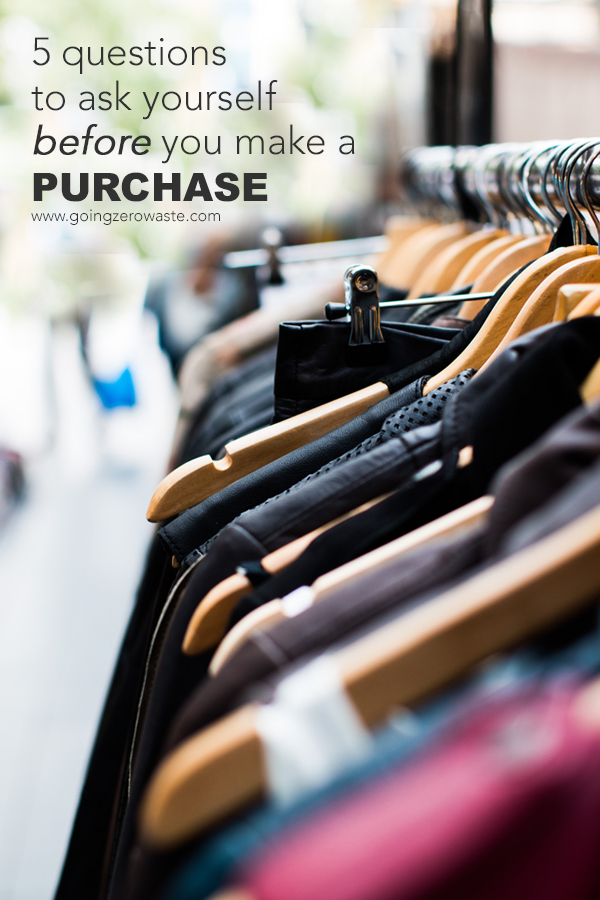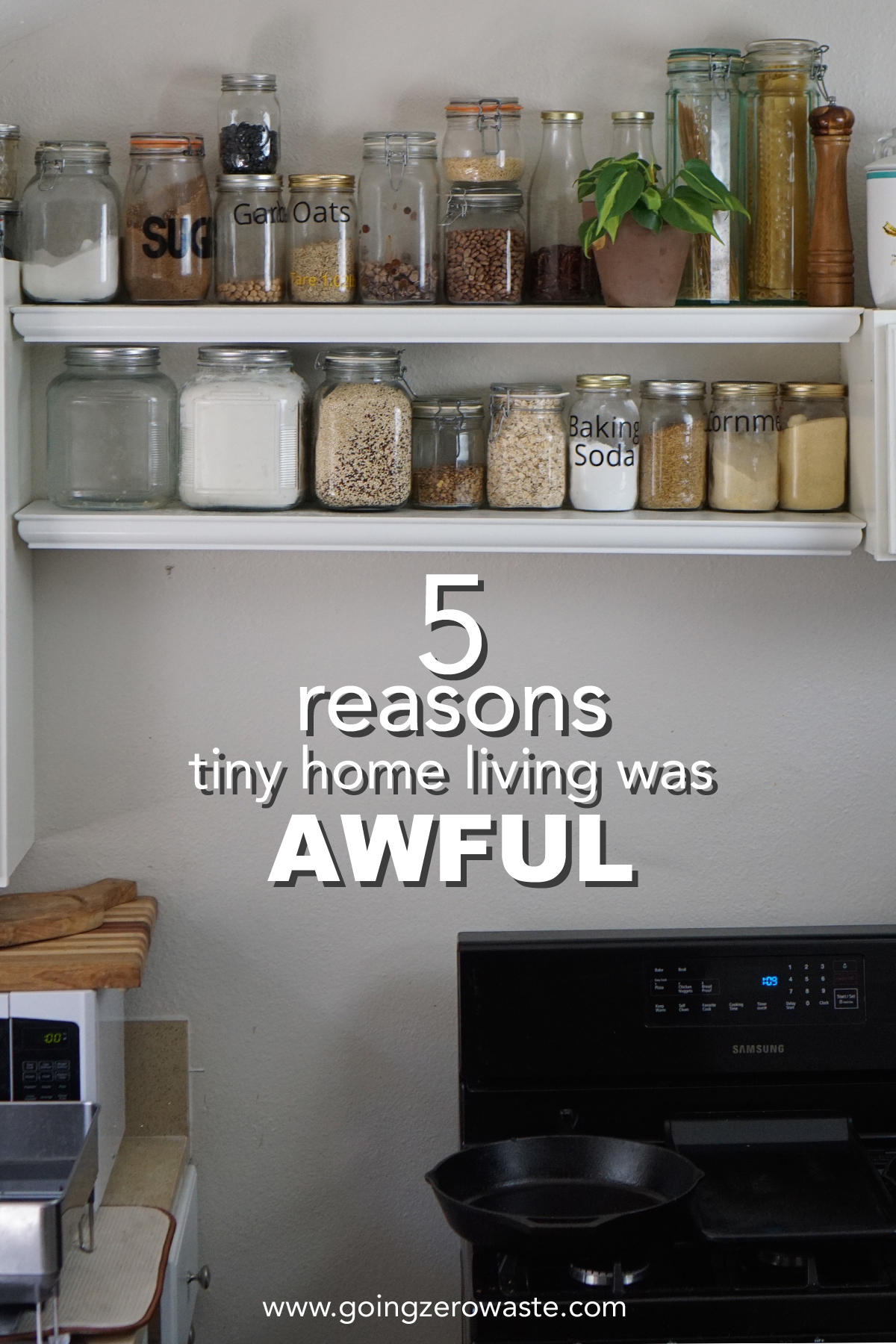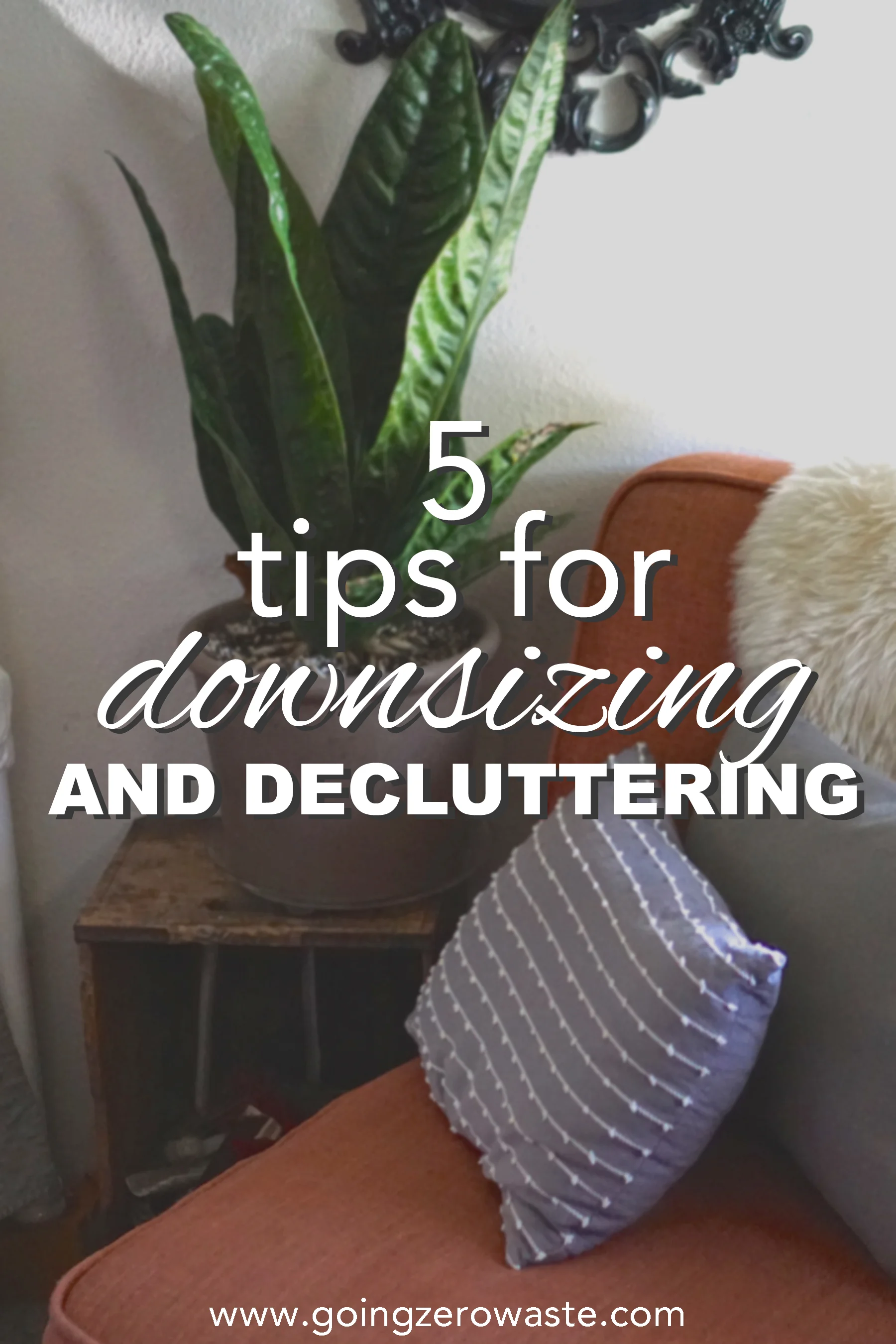What is minimalism and how does it relate to zero waste? Simply put, minimalism is about living consciously and with only the things we need. Sounds a lot similar to zero waste living, huh?
Minimalism discourages excessive consumerism, just in the same way zero waste does. We don’t need excessive clothes, cars, houses and electronics to be happy – but modern society tells us otherwise.
With minimalism, less is more. You focus not so much on the items, but on the people, the experiences, the memories you build over time.
That doesn’t mean you have to give up all your possessions and abandon your dreams of owning a nice house or car. It simply means not putting so much pressure on physical items to bring us happiness.
When you focus too much on the material things in life, you tend to over buy and get wrapped up in consumer culture. We all know over consumption also hurts the environment, and sometimes even our own health.
In this way, minimalism and zero waste are tied nicely together. To help you understand minimalism a bit more, here’s an introduction I’ve whipped up for you.
why should you be a minimalist?
Minimalism will help you achieve freedom. Freedom from the trappings of consumer culture, that is.
It helps you slow down and look at life from a different perspective. It makes you realize things don’t have to be overcomplicated.
The whole goal of minimalism is to find lasting happiness by ridding yourself of life’s excesses. It teaches you to focus on what’s important so you can find fulfillment.
When you go minimalist, and stop focusing so much on the material world, you can:
Live moment by moment
Pursue your dreams and passions
Discover your calling
Improve your relationships
Focus on healthy living
Contribute to the world
Eliminate discontent
Consume less
These are just a few benefits you receive from going minimalist.
the less you consume, the better:
We all have to consume – we all need food, clothes, shelter and other essentials. It’s when we buy items we don’t really need that consumption becomes a problem, and excessive.
We’re constantly bombarded by ads, billboards, videos and commercials telling us to consume more. If we do that, we’ll be happy. But the opposite is the truth.
True happiness doesn’t come from an item. It comes from fulfillment, from doing good, and from living a life full of meaning.
ask yourself – when is enough, enough?
If you can afford the necessities, is it really necessary to continuously splurge on items you don’t need?
Do you really need the souped-up truck with the fancy stereo system? Or the huge pool in the backyard where there could be a garden?
It’s essential to ask yourself when enough is enough. Having nice items isn’t bad, but getting lost in consumer culture is.
get to the root cause of your purchase:
Are you trying to gain happiness? Maybe you want to have something to show off to your friends and family? Are you simply bored?
Ask yourself the reasons you want to buy more stuff. The truth may not be as innocent as you first thought.
If you’re buying items simply to keep up with the Johnsons, you need to reevaluate things on a deeper level. Buying consciously, and with intent, will make you a lot happier.
Here’s seven actionable steps to live a more minimalist life.
1. analyze your possessions:
Start by going through what you already have and ask yourself why you bought something. In many ways, it’s similar to conducting a trash audit.
How many clothes do you have? How many kitchen appliances do you own? How many beauty products are squirreled away in your bathroom cabinet? Is it adding any value to your life at all or is it just taking up space?
When you get to know the items in your life, you start to learn your buying patterns.
2. downsize your material items:
This doesn’t mean simply throw them into the trash! Get the ultimate guide on decluttering the zero waste way which helps you share the things you no longer use.
Related: How to Join the Sharing Economy
Perhaps donating all your unused clothes to a thrift shop is a good option. You can also give away some items as gifts to your loved ones. Or, perhaps create a free mini library using the books you no longer read.
There are so many creative ways to get rid of the items that no longer serve a purpose in your life, without being wasteful.
Related: Where to Donate Unusual Items (like old tennis shoes & swimsuits!)
3. simplify your routine as much as possible:
Do you have an elaborate eco-friendly skin care routine routine at night or in the morning? When you clean your home does it take you hours because you use so many different products?
Whatever routine you have, try to find ways simplify it so you can do them more efficiently.
Generally speaking, when you cut down on the amount of items in your life, you’ll naturally create a simpler routine for yourself too. You might even gain some extra time for yourself too!
For example, when you minimize your skin care products at night, it’ll give you more time so you don’t have to rush to bed right away. You’ll actually be able to relax before going right to sleep.
As for cleaning products, there’s no need to have 10 different cleaners sitting in your cabinet. One or two really great, multi-purpose cleaning products are more than enough, like an all-purpose cleaner or my magic tub scrub that has rave reviews!
For more easy, zero-waste and eco-friendly cleaning recipes be sure to check out my book 101 Ways to Go Zero Waste.
4. analyze your wants:
Often times, we have lots of wants like a pair of trendy overalls, an avocado saver, a strawberry slicer, a new tea kettle, or dress etc. etc.
While there’s nothing wrong with having a wishlist, it’s important to ask yourself whether these items will truly bring value to your life.
Related: Why I Wait 30 Days Before Making Any Purchase
Ask yourself what will they do for your happiness once you achieve them? Keep in mind material items only tend to grant us happiness for a brief amount of time. This is a great study on how fleeting happiness can be after buying something.
Seek to pursue goals that aren’t too material based. Here’s a list of non-material based goals, wants, and experiences you might like to try instead.
a new exercise class
get out in nature
try a new restaurant
enjoy time reading a new book in a cafe
get a massage or facial
save for your retirement
learn a musical insturment
pick up a new hobby
save for a DREAM vacation!
Get inspired with a huge list of experiences to buy instead of a new pair of shoes!
Honestly, when I’m about to buy something - (ethical fashion you so expensive) - I ask myself would you rather have a massage or a new dress? Would you rather have $1,000 in the future (be on the lookout for my guide to eco-friendly investing) or buy this new pair of shoes?
Guess what I choose 90% of the time?
5. stick to realistic, simple goals:
With all your extra free time, write out a few goals for you to achieve. Maybe you want to go back to painting or voice lessons or pick up the piano again!
But, don’t make too many goals at once. This can easily lead to overwhelm and discontent when we can’t fulfill them.
Setting too many goals can also easily over-complicate your life, and remember minimalism is all about SIMPLICITY.
Simplify your goals by narrow it down to just one or two to start. You’ll have a higher success rate if you focus on just two or three goals, opposed to eight.
Personally, I like to write down my little goals for the day in a notebook and check them off. This helps me feel satisfied when I accomplish my tasks, and helps me to break big goals (learn french or how to play the piano) into a more manageable task like practice for 30 minutes.
RELATED: 10 Self-Care Practices Good For You and the Environment
Also, having smaller day-to-day goals helps keep you in tune with the present moment, rather than living for something in the future. It keeps you grounded to the here and now, which is important in minimalism.
6. be selective with your time:
Time is precious, so it’s important to watch who and what you give your energy to.
Is there anything in your schedule that’s eating up your time you don’t find necessary or joyful? What could you be doing with that time instead?
Analyze what your schedule looks like and see if there’s anything you deem unnecessary.
Perhaps going to get your dog groomed every week is cutting in on time you could spend playing with them. Or, maybe those piano lessons you thought you’d enjoy are becoming more like a chore and interfering with other aspects of your life.
It’s good to re-access where you’re at and decide if you want to continue. After all, as we grow, our hobbies and interests can change.
It’s important to remember minimalism isn’t just about stuff – it's about minimizing in general. That applies to your schedule, too.
7. practice gratitude:
It’s so important to make every day count and acknowledge your blessings. In order to live a conscious life, you have to be able to see all that you have.
I like to create a gratitude list every week of the things I’m grateful for - it keeps me centered!
Creating a gratitude list also helps me realize the things I find myself being grateful for the most aren’t items; they’re people and experiences.
When you practice gratitude on a regular basis, you’re less likely to seek out more stuff. Instead, you’ll be content with what you already have.
I believe The Grinch said it the best, “Then the Grinch thought of something he hadn't before! What if Christmas, he thought, doesn't come from a store. What if Christmas...perhaps...means a little bit more!”
Guest Post: Ariana Palmieri is the founder of Greenify-Me.com, a blog dedicated to zero waste living and sustainability. Her work has been featured on MindBodyGreen, Green Matters, The Penny Hoarder and several other publications. Get her free e-book "10 Ways to Reduce Trash" by signing up to her newsletter and learn how to reduce your waste today.


















